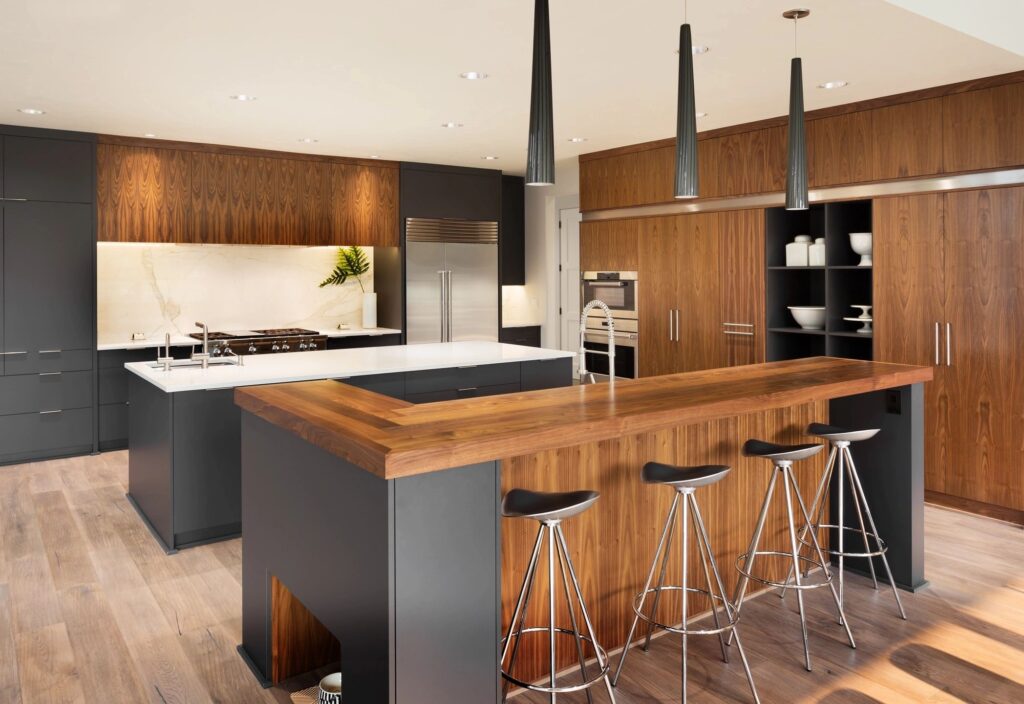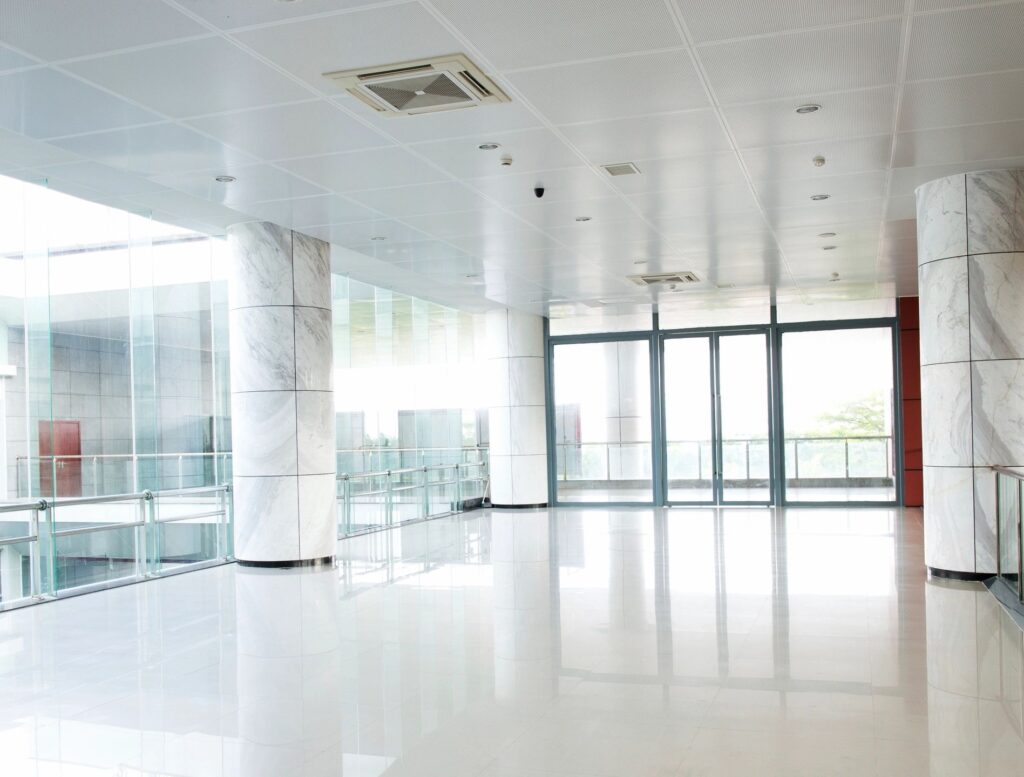
Minimalism: What it is, Features, Decor Tips and Photos
If minimalism could be defined in just one sentence, that sentence would be “less is more”.
Most likely you’ve heard it before and it’s no wonder. This phrase is super famous and has never lost contemporaneity. It won the world at a time when modernism was on the rise in Europe and the person responsible for saying these words was the German architect Ludwig Mies van der Rohe, professor at the Bauhaus and one of the first to introduce the idea of minimalism in architecture. and project. .
Want to know more about minimalism? So come follow this post with us, we can assure you that this is a movement that goes far beyond black and white.

What is minimalism?
Minimalism is an artistic movement that was born between the 60s and 70s. It is not known very well how and where minimalism originated, the indisputable fact is that it belongs to an avant-garde current that took Europe and the United States after the second World War.
Strongly influenced by modernism and by oriental and Scandinavian aesthetics, minimalism radically broke with previous artistic movements, especially the baroque and romantic ones, which preached a far-fetched and exaggeratedly adorned aesthetic.
With minimalism all excesses were removed, leaving only what is really important. This is how the phrase “form follows function” became famous. The author of this other modernist pearl is the architect Louis Sullivan, also a member of the Bauhaus.
For him, the object needs to fulfill the function for which it was created and not the other way around. With that, everything that is superfluous starts to be seen as an impediment to the complete functionality of an object.
Features of minimalism
Minimalism has some characteristics that make it easily identified. Check out what they are below:
Straight lines

Minimalism adopted many traits from the modern movement, including the presence of straight lines and sharp angles, both in furniture and decorative pieces and in architecture.
Therefore, it is not uncommon to see, for example, minimalist living rooms with straight sofas or facades of houses with a parapet instead of an apparent roof.
Clean design and functionality

Another important feature of minimalism is clean design. To follow the function, the object needs to have a clean and intuitive aesthetic, while being comfortable and aesthetically interesting.
Neutral and light colors

A lot of people tend to associate the idea of minimalism with the colors white and black, which is not entirely wrong.
Minimalism presupposes valuing spaces and objects for their simplicity and function, which is why the use of colors turns out to be limited.
However, that doesn’t mean there isn’t room for a colorful palette in minimalism.
It is indeed possible to reconcile more vibrant colors with minimalist aesthetics, as long as they are harmonic and do not cause visual smoke.
The most common, in this case, is the use of neutral colors associated with color points that can be in details, such as pillows, pictures and rugs, for example.
Light

Minimalism is strongly influenced by Eastern and Scandinavian aesthetics and, therefore, the appreciation of natural light is an important feature of this style.
Minimalist environments tend to always be very well lit and airy, with large gaps, windows and doors.
Empty spaces

However, it is important that these spaces are organized within the environment so as not to cause a feeling of cold and discomfort. For this, the tip is to look for furniture proportional to the size of the environment.
Integration
One of the greatest characteristics of modernism and, consequently, of minimalism is integration.
The environments designed in this proposal are integrated, efficient and dynamic to favor the pace of modern life.

Quality over quantity
One of the biggest advantages of minimalism is that it teaches you to shop smart and intuitively.
This is because you start to observe the quality of the products and materials instead of just being satisfied with the price.
You know that story about the cheap that comes out expensive? Yep, she doesn’t have time for minimalism. Here, each acquisition is initiated based on the real need for the product, the functionality it will have on a day-to-day basis and the comfort it is capable of offering.
For minimalism, it is more important to have a single sofa that is extremely comfortable, functional and practical to clean, than to have two or three that no one wants to touch.
That is, in the long run, minimalism proves to be an economy for the pocket.
Minimalism in Architecture

Minimalism in architecture is recognized for its geometric shapes, right angles and modern materials such as glass, stainless steel, steel and concrete. The combination of these elements composes facades and interior spaces that are simple yet sophisticated at the same time.
Cracks and openings are common throughout the project for better light entry. Integration between spaces is also a feature of minimalist architecture.
Minimalism As a Lifestyle

Nowadays, however, minimalism has left the field of design and architecture to gain lifestyle status.
Currently there are thousands of people who identify themselves as minimalists, that is, who have abandoned any excess in their lives, including the way they live, eat, dress and socialize. All this in favor of a simpler and freer life.
But then, is minimalism a vow of poverty? Contrary to what many might think, minimalists do not take a vow of poverty, nor do they sleep on the floor of an empty room (unless they want to). Minimalism is nothing more than an agreement with oneself to reduce and rethink consumption habits.
Minimalism in decoration: how to create a minimalist decoration

It may be that you identify a lot with the minimalist style, but you cannot practice it in your home. And do you know why?
So don’t try to force things if you’re the type who loves a trinket or a wall full of pictures. And, understand, there is no problem with that. What you can’t do is want to enter a box that doesn’t fit just to follow a trend of the moment.
But if you’ve already adhered to minimalist thinking, then the following tips can help you create an environment within this proposal. Check out:

*Eliminate decoration excesses starting with everything that is not necessary or that does not add function in everyday life. Does that mean you can’t have anything decorative? Of course you can! But choose few pieces and preferably the most meaningful to you.
*Use neutral and light colors to compose the décor.
Straight line furniture is welcome.
*Choose a material and stick with it until the end. It can be made of wood, glass or stainless steel. Just give preference to one of them and stick to this proposal so as not to generate excess information.
*Prefer geometric prints in neutral colors and light, soft fabrics.
*Do a lot of research before buying anything and make sure the quality of what you’re going to take home, even if it means spending a little more.
*Retractable and built-in furniture is perfect for the minimalist style, especially in small homes.






